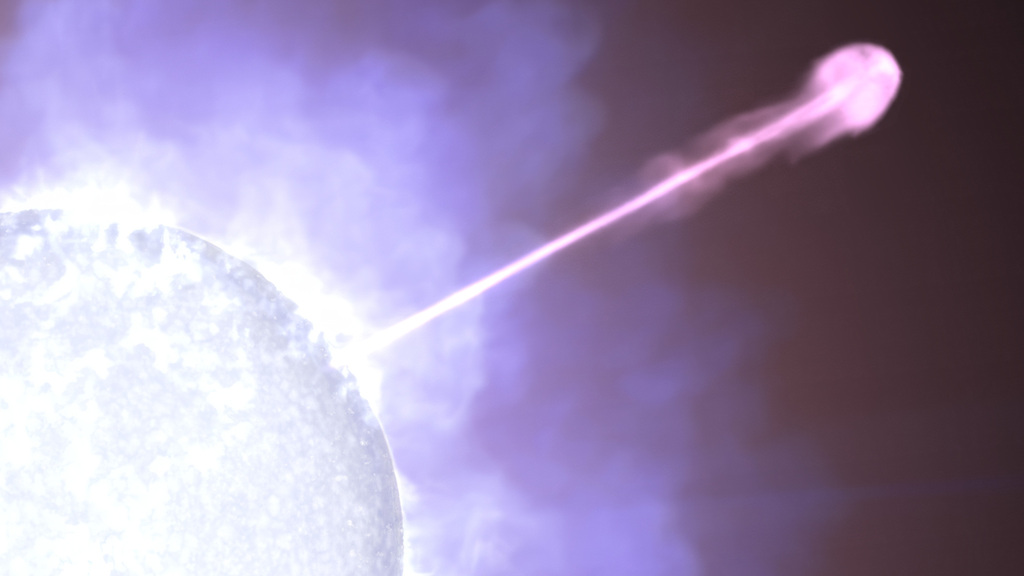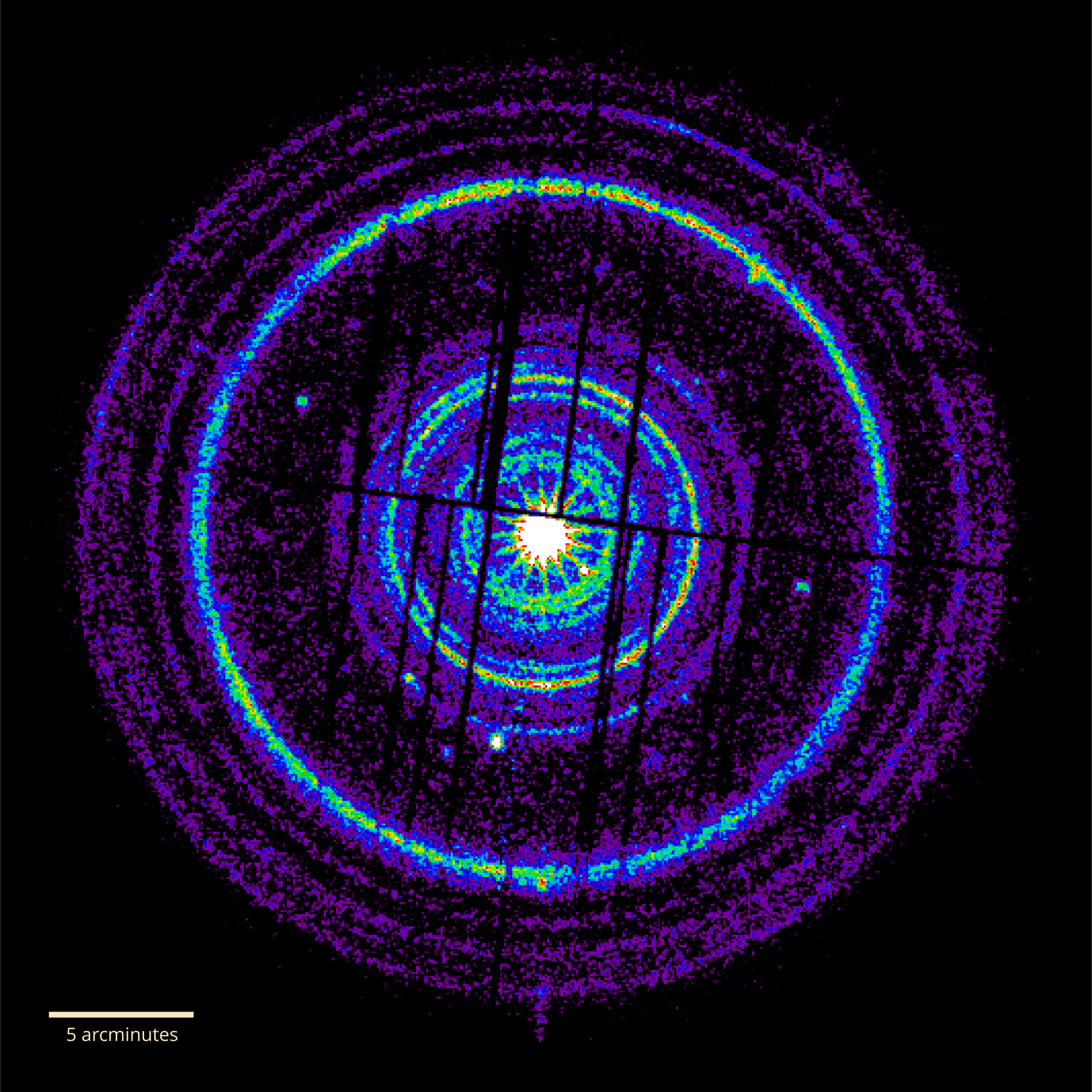NASA Missions Detect Record-Breaking Burst

Swift’s X-Ray Telescope captured the afterglow of GRB 221009A about an hour after it was first detected. The bright rings form as a result of X-rays scattered by otherwise unobservable dust layers within our galaxy that lie in the direction of the burst. The dark vertical line is an artifact of the imaging system.
Credit: NASA/Swift/A. Beardmore (University of Leicester)
Astronomers around the world are captivated by an unusually bright and long-lasting pulse of high-energy radiation that swept over Earth Sunday, Oct. 9. The emission came from a gamma-ray burst (GRB) – the most powerful class of explosions in the universe – that ranks among the most luminous events known.
On Sunday morning Eastern time, a wave of X-rays and gamma rays passed through the solar system, triggering detectors aboard NASA's Fermi Gamma-ray Space Telescope, Neil Gehrels Swift Observatory, and Wind spacecraft, as well as others. Telescopes around the world turned to the site to study the aftermath, and new observations continue.
The signal, originating from the direction of the constellation Sagitta, had traveled an estimated 1.9 billion years. Astronomers think it represents the birth cry of a new black hole, one that formed in the heart of a massive star collapsing under its own weight. In these circumstances, a nascent black hole drives powerful jets of particles traveling near the speed of light. The jets pierce through the star, emitting X-rays and gamma rays as they stream into space.
According to a preliminary analysis, Fermi’s Large Area Telescope detected the burst for more than 10 hours. One reason for the burst's brightness and longevity is that, for a GRB, it lies relatively close to us, but it’s also among the most energetic and luminous bursts ever seen regardless of distance. Another GRB this bright may not appear for decades.

This sequence constructed from Fermi Large Area Telescope data reveals the sky in gamma rays centered on the location of GRB 221009A. Each frame shows gamma rays with energies greater than 100 million electron volts (MeV), where brighter colors indicate a stronger gamma-ray signal. In total, they represent more than 10 hours of observations. The glow from the midplane of our Milky Way galaxy appears as a wide diagonal band. The image is about 20 degrees across.
Credit: NASA/DOE/Fermi LAT Collaboration

Images taken in visible light by Swift’s Ultraviolet/Optical Telescope show how the afterglow of GRB 221009A (circled) faded over the course of about 10 hours. The explosion appeared in the constellation Sagitta and occurred about 1.9 billion years ago. The image is about 4 arcminutes across.
Credit: NASA/Swift/B. Cenko

As above but without the burst circled.
Credit: NASA/Swift/B. Cenko
Astronomers think GRB 221009A represents the birth of a new black hole formed within the heart of a collapsing star. As illustrated here, the black hole drives powerful jets of particles traveling near the speed of light. The jets pierce through the star, emitting X-rays and gamma rays as they stream into space.
Credit: NASA/Swift/Cruz deWilde
For More Information
See NASA.gov
Credits
Please give credit for this item to:
NASA's Goddard Space Flight Center. However, individual items should be credited as indicated above.
-
Science writer
- Francis Reddy (University of Maryland College Park)
-
Scientists
- Elizabeth Hays (NASA/GSFC)
- Brad Cenko (NASA/GSFC)
-
Producers
- Scott Wiessinger (KBR Wyle Services, LLC)
- Francis Reddy (University of Maryland College Park)
Release date
This page was originally published on Thursday, October 13, 2022.
This page was last updated on Wednesday, May 3, 2023 at 11:43 AM EDT.


